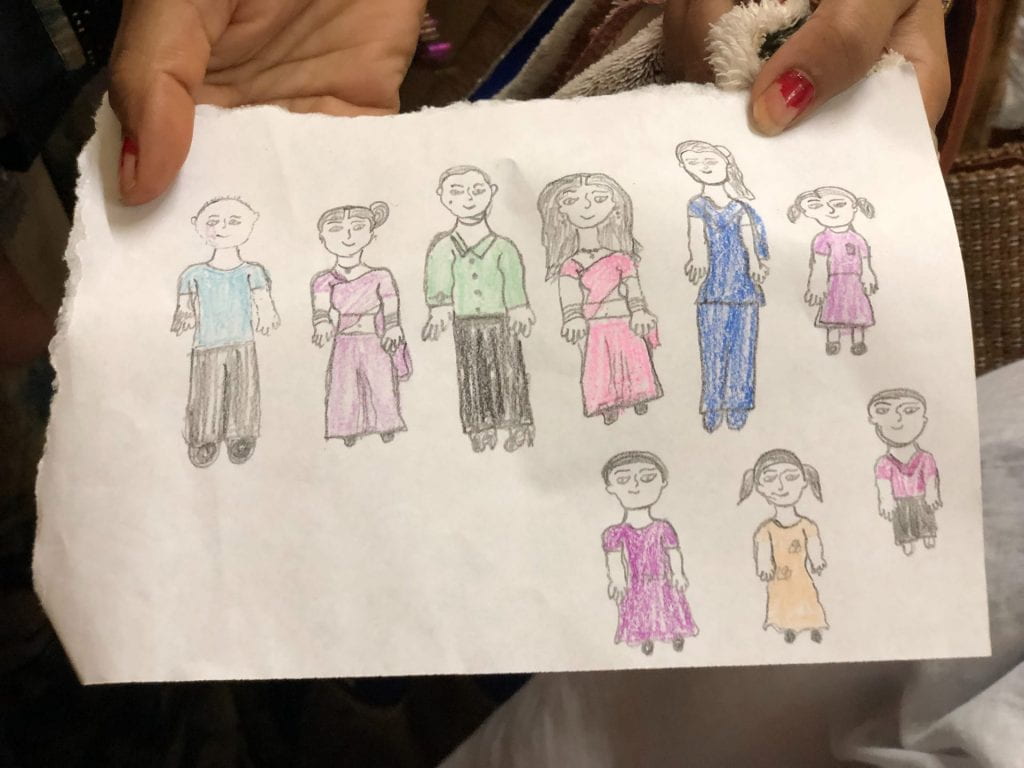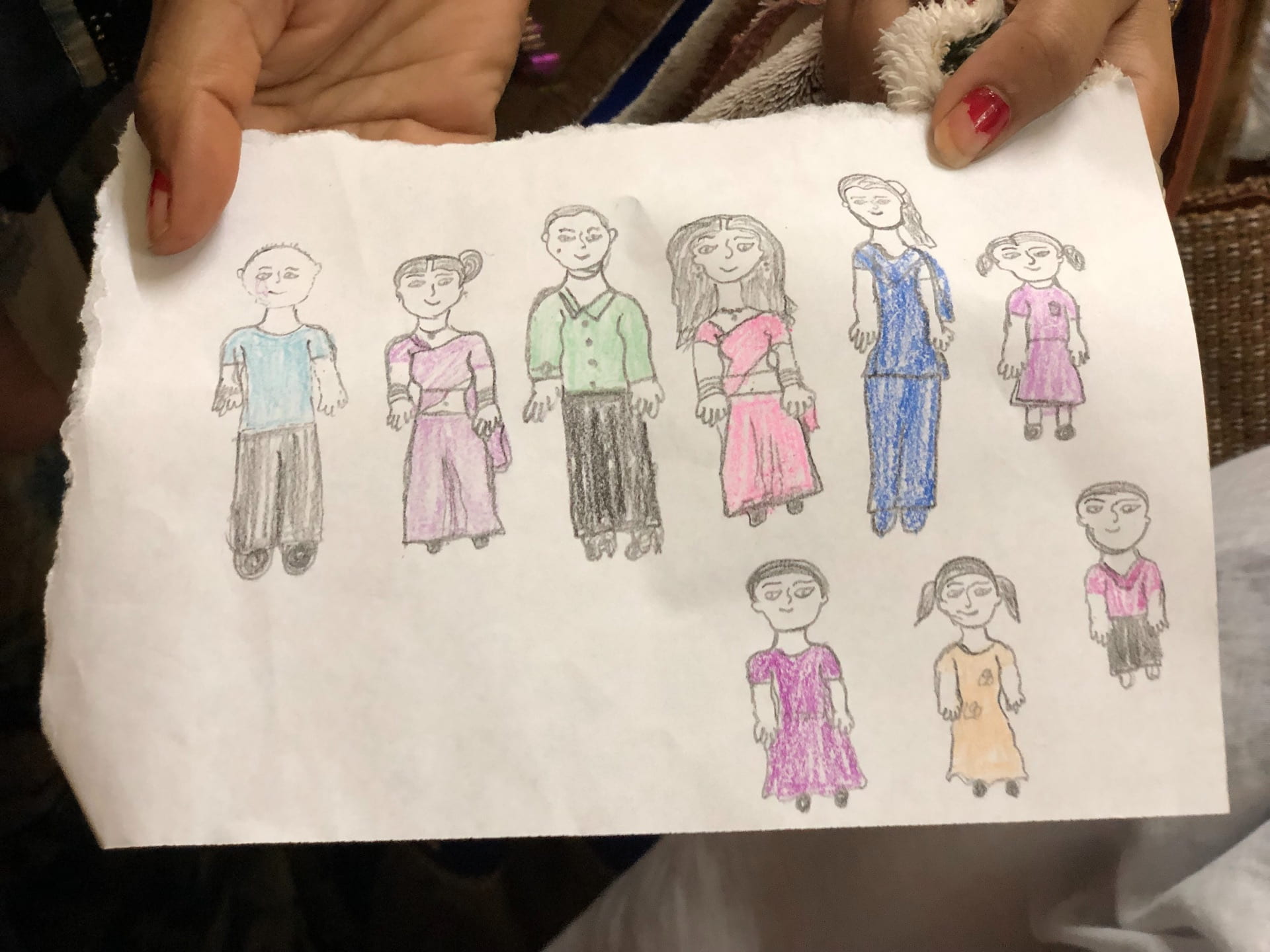“Lalon-Palon” is a Bangla term for nurturing young children. This term sums up my main area of interest for my capstone project: how do mothers and grandmothers perceive the experiences, priorities, challenges, and goals they have in raising children in West Bengal in their early years? While I have only begun to look at the data in terms of general trends, my primary goal is to conduct analysis to see where there are generational differences, and how that may impact the way that service providers may work with families. As early childhood gains more recognition globally as a keystone for local and and national development, understanding the sentiments of caregivers is pertinent to overall policy making, and can have implications for all sectors from health to labor to transportation.
When participants were recruited for my interviews in Kolkata and Birbhum districts of West Bengal, I initially thought I would interview fifteen mothers and fifteen grandmothers affiliated with three different non-profits. I never thought I would actually be able to speak with fifty-five mothers and twenty-seven grandmothers affiliated with five non-profits! All of the non-profit programs were focused on young children and families, with some also providing additional health and vocational training services. The mothers and grandmothers involved in the care of young children were eager to share their perceptions in regards to the children’s’ health and well-being, safety, and education. A background on the purpose and theoretical foundations for my research can be seen in my previous blog post where I discuss my interviews with Santal families in Birbhum. Speaking with families at the different nonprofits in Kolkata was a departure from speaking to Santal families in Birbhum, mainly because the Birbhum families themselves were not only deeply familiar with each other, but a sizable amount of the mothers had been alums of the program themselves. In Kolkata, at the different nonprofits, many of the mothers and grandmothers alike had never received services that they had now enrolled their own children and grandchildren in, and the families were coming from various background to access these services. Most of the families were from low-income backgrounds but some came from middle class backgrounds. In addition to families from the state of West Bengal, families originally from the states of Bihar, Jharkhand, and Odisha who have relocated to West Bengal were interviewed. The families mainly came from Hindu and Muslim backgrounds, and included a combination of women who are homemakers and women who are working. The families represented a combination of joint families, nuclear families, and single mothers. While the families represented were diverse in the aforementioned ways, they all shared a common need to adapt to new settings and challenges and utilize local programs and services to be able to provide positive foundations for their young children’s physical, emotional, and academic development. The families all described how the services helped them to bridge a gap between what they did not know well about challenges for young children in Kolkata, and what they need to know in order to navigate those challenges and provide the best for those children.

As I have been reviewing the data from these interviews, the following initial takeaways have emerged. While they may change or be elaborated upon as I continue to examine the interviews, the following points appeared poignant to the Kolkata context:
- The awareness of and the determination in overcoming the limitations of poverty were predominant for mothers especially and were a major motivation for them to seek out the non-profit programs as a means of helping to grasp the educational landscape in the city. This finding was common for both mothers who had grown up in Kolkata and mothers who had grown up in other parts of the state and other states. One mother made a statement that summed up the sentiments of many of the mothers in “I am poor, I can’t teach my child very much but that is why I send my child to this program, because the teachers here know what my child will need to learn to be prepared for school. I want my child to learn what I could not learn.”
- In the Kolkata context, the involvement of grandmothers with the programs was often facilitated through parents. This was common both for families where the grandmother was the primary caregiver at home while the mother worked or both the grandmother and mother stayed at home. Grandmothers were in any case active in the lives of their grandchildren, whether they were more involved in monitoring the child’s diet, schedule, and studies directly or if they were assisting the parents in making these decisions for their child.
- For families who had relocated to Kolkata from other areas, they often are relocating from rural areas and are seeking access to educational, health, and economic resources not available in those areas. For example, one family came to Kolkata from a village in West Bengal so that their child with learning disabilities could receive appropriate instruction with teachers who were highly qualified in special education.
- There was also awareness in mothers and grandmothers of health and safety risks for young children, especially for those families living in slums, and the mothers and grandmothers would make every effort to teach their children protective habits regarding safety and well-being. For example, one mother remarked that “times these days are different” and was concerned about child kidnapping; as such she would make sure to have conversations even with her very young children about avoiding strangers and reporting to either a teacher or her about any incidents.
- Even for mothers and grandmothers who had not completed schooling or were not even literate, there was a desire to support their child’s home-to-program connection. Whether it was giving their child writing prompts, listening to their child’s stories and songs they had learned at school, or talking regularly to the program instructors, the mothers and grandmothers were invested in ensuring their child’s success and pathway to future school success. In addition to good health and academic building blocks, such as counting and letters, mothers and grandmothers did discuss character development and good reputation in the community as one learning objective they have for their children. In many ways, the mothers and grandmothers were knowledgeable about how home and program environments could influence their child’s growth and wanted to utilize that knowledge in a beneficial way.
Overall, the program instructors and leaders at each of the non-profits were seen as trusted resources that mothers and grandmothers could learn from to better support their young children. Given an increased focus in the early childhood space on issues for maternal well-being and family/community engagement, the presence of dynamic non-profits in Kolkata that are helping mothers and grandmothers appears to be crucial to assuring too that young children are well-nurtured. These women were amazing mothers and grandmothers reached out beyond the places and people they are familiar with – stepping outside their comfort zones – so they could provide better futures for their children; their collaboration with local non-profit organizations serves as a stepping stone to achieve their aims.


